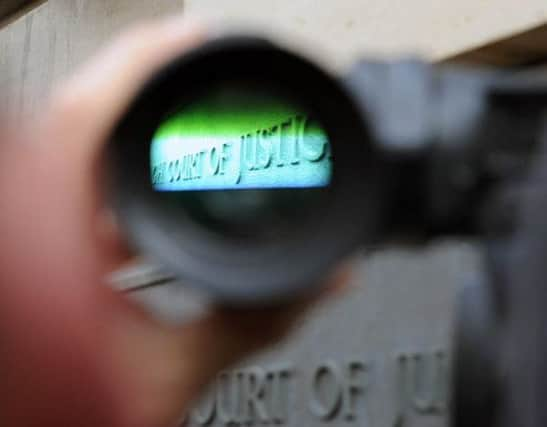TV cameras to be allowed in Scottish court rooms
This article contains affiliate links. We may earn a small commission on items purchased through this article, but that does not affect our editorial judgement.


Under a series of changes outlined yesterday, civil and criminal appeals can now be broadcast live, while some criminal trials can be filmed for documentary purposes.
The filming of judges’ sentencing remarks will be allowed for news broadcasts, although the live transmission of criminal trials will remain off-limits.
Advertisement
Hide AdAnnouncing the changes, Lord Gill, Scotland’s most senior judge, said it was important to bring the court system into the “modern world”.
There will also be a relaxation on the use of “live text-based communications”, allowing accredited journalists to tweet from the courtroom.
Lord Gill, the lord president, said there had been “considerable pressure” from broadcasters to be allowed to transmit more from inside court.
That pressure led to a review chaired by Lady Dorrian, which yesterday published a number of recommendations, all of which were accepted by Lord Gill.
They include the filming of criminal trials for documentary purposes, except in cases involving children, sexual offences and vulnerable witnesses. The filming of civil cases will be allowed at the first instance, excluding proceedings involving asylum seekers or in family cases.
When filming sentencing, broadcasters will only be allowed to show the judge, not the accused, counsel or public benches.
Advertisement
Hide AdSpeaking at a media conference in Glasgow, Lord Gill said: “In recent years, there has been considerable pressure from the media for the televising of proceedings in the courts.
“On one or two occasions, my predecessors have allowed there to be cameras in court. When I became lord president, it was clear to me that there was no overall policy in the matter. We simply could not go on making ad hoc decisions on individual applications to film or to televise.”
Advertisement
Hide AdIn a wide-ranging speech, the judge said he could foresee “paperless” courts and hearings no longer based on oral evidence.
Television cameras have been allowed into Scottish courts on a number of occasions over the past few years.
The retrial of Nat Fraser for the murder of his wife Arlene in 1998 was filmed by Channel 4 in 2012 and shown as The Murder Trial the following year.
In 2012, legal history was made when David Gilroy became the first convicted killer to have his sentencing filmed for TV. Gilroy was jailed for murdering bookkeeper Suzanne Pilley, whose body has never been found. His case is currently being reviewed by the Scottish Criminal Cases Review Commission.
In her report published yesterday, Lady Dorrian noted that concerns remain about screening criminal trials live, including the possibility that television coverage would make witnesses reluctant to give evidence and influence those due to give evidence.
James Wolffe QC, dean of the faculty of advocates, said: “While there must be safeguards to protect the interests of justice, public understanding of the work of the courts – which is fundamental to our democracy – will be enhanced by these proposals, and I welcome them.”
Advertisement
Hide AdFiona Robb, secretary to the Law Society of Scotland’s civil justice committee, added: “We agree that effective use of digital technology is essential in a modern court system so it is good to see new technology being embraced by the lord president.
“Used responsibly, cameras in court and the use of features like live tweeting will help to demystify the law, allowing the public to gain insight into the process and improve access to justice.”